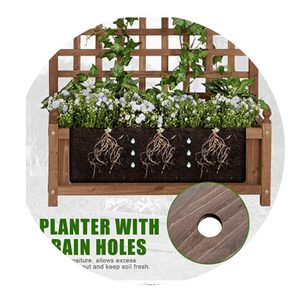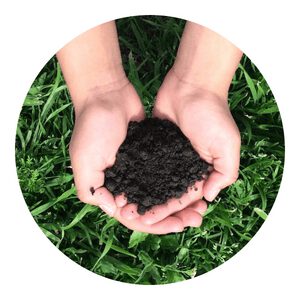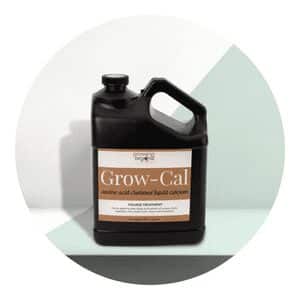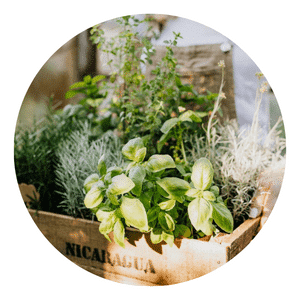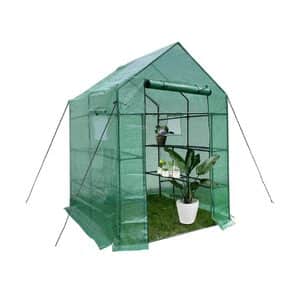spring gardening tips for growing vegetables organically
The days are getting longer and the weather is getting warmer
The snow is melting and the rain is pouring
All of the trees are starting to bloom
The birds are singing and the bees are buzzing
It’s finally Spring, a time for new beginnings
Get your garden ready for the new growing season
Spring Menu
Start by preparing the soil
Test the pH level of the soil to ensure it is within the optimal range for vegetable growth.
Before getting started, gardeners should consider testing the pH level of the soil to ensure it is within the optimal range for vegetable growth.
This is an important step as plants are more likely to thrive and yield larger harvests when grown in soils with a pH balance that suits their individual needs.
To test for pH levels, gardeners can purchase at-home kits from local stores or online retailers.
These kits include materials like litmus paper and solutions that allow for easy testing and will help determine if the soil needs adjustments before planting begins.
If necessary, soil can be amended with various materials such as lime or sulfur which can raise or lower the pH balance respectively.
Add compost or well-rotted manure to improve the nutrient content and structure of the soil.
Compost and manure can boost your soil’s fertility, allowing it to hold more water, air and nutrients for a healthier garden in the upcoming season.
Compost is made from organic material like leaves, grass clippings and kitchen scraps that have been broken down by bacteria and fungi into a nutrient-rich humus (a dark coloured substance).
Manure consists of animal waste from farm animals such as chickens, horses and cows that has been aged enough so that its nutrient content has increased significantly.
Both types of organic matter are important for improving the health of your garden soil.
Consider using raised beds or containers if you have poor soil quality.
As we approach spring, gardeners are busy preparing their yards for the growing season.
For those with poor soil quality, raised beds or containers can provide an ideal solution for successful gardening.
Raised beds and containers both offer numerous benefits that make them an attractive choice for gardeners dealing with soil issues.
Raised beds allow gardeners to fill in the bed with a high-quality soil blend customized to their specific needs.
The structure of the bed also makes it easier to keep the soil drained and well aerated.
Containers also provide a great way to control your own planting environment, including climate and drainage control which is beneficial if you have clay or rocky soils that are difficult to plant in directly.
Additionally, these options require much less upkeep than traditional gardens as they don’t need to be tilled each year and weeds can be easily kept at bay.
Choose the right location
Look for a spot with at least 6-8 hours of direct sunlight per day.
As spring approaches, many gardeners and plant-lovers are getting ready to start their gardens.
One of the most important elements to consider when planning a successful garden is the amount of sunlight each spot will receive.
When looking for the ideal environment for your plants, look for an area that gets 6-8 hours of direct sunlight per day.
This will ensure that your plants have enough energy and light to grow in abundance.
It’s important to note that different types of plants require different amounts of sunlight – some may need more or less than 6-8 hours depending on the species.
Knowing which type of plants you plan on growing can help you find an appropriate spot with the right amount of sunlight exposure.
It’s also important to keep in mind that as summer progresses and days become longer, your chosen spot may get too much sun – so be sure to provide shade if needed!
Consider the location of nearby trees and buildings, as they can affect the amount of sunlight and wind the garden receives.
Make sure the location has good drainage to prevent waterlogging.
Spring is the time of year when our gardens come alive.
As we get out in the sunshine and start to plan our garden designs, it’s important to remember one essential factor – drainage.
Poor drainage can lead to waterlogging, which can cause serious damage to your plants and soil.
Good drainage will allow excess water from heavy rainfall or irrigation systems to escape quickly, allowing your plants’ roots plenty of oxygen and preventing root rot.
To ensure proper drainage for a new garden bed or existing plot, you should perform a few simple checks.
Firstly, look for any low-lying spots in the ground where standing water may accumulate after rainstorms; these areas should be either filled with additional soil or sloped so that water runs away naturally.
Additionally, add sand or gravel near large trees or along paths as this will help disperse excess moisture more rapidly.
Roots so deep, in soil brushed clean, Organic veg gardens the best you've seen. A little mulch, plus plenty of sun, Is the first step and will get things done. Crop rotation to help with disease, is one tip that'll bring you ease. Water less but often enough, To keep your greens looking puff! Fertilize too if need be, But never use excessive chemicals!
Chappy The Gardener
Select the right vegetables for your climate
Research which vegetables are best suited to your local climate and growing conditions.
Before you start planting, take some time to research which vegetables will do best in your local climate and growing conditions. That way, you can be sure that your garden is filled with healthy, delicious produce all season long.
To get started, look up the average temperature range for your area during the spring months and determine what type of soil works best for gardening in your region.
You should also consider whether there are any environmental factors like drought or flooding that could affect your plants’ growth.
Once you have a better picture of what kind of environment you’re working with, you can begin researching which vegetables are best suited for it.
Look into varieties that match well with both the temperatures and soil quality of your area so they can thrive throughout the season.
Consider the length of your growing season, as some vegetables require a longer period of warm weather to mature.
As the arrival of spring signals the end of cold winter weather, it is also a reminder to gardeners that it is time to start planting their vegetables.
However, before selecting your crops for this season’s garden, one should consider the length of their growing season.
Some vegetables require a longer period of warm weather to mature and will not reach full size if planted too late in the spring or summer.
For example, root vegetables such as carrots and radishes are generally easier to grow than some other types due to their quicker maturation periods.
But other varieties like tomatoes, squash and cucumbers may take several weeks once planted before they begin producing fruits or vegetables suitable for harvesting.
Vegetables such as corn require even more time than others with up to three months needed for them to fully mature after being planted in soil.
Plan your garden layout
Determine the size and shape of your garden based on the amount of space you have available and the types of vegetables you want to grow.
Whether you are a seasoned gardener or just starting out, it’s important to consider the size and shape of your garden when making decisions about what to plant.
Here are some tips on how to determine the size and shape of your garden based on the amount of space you have available and the types of vegetables you want to grow.
When deciding on what vegetables to grow, think about their individual needs: sun exposure, soil type, water requirements, etc.
Many vegetables require ample amounts of sunlight so be sure that part of your garden will get at least six hours per day during peak season.
Additionally, for more compact spaces consider growing tall varieties like pole beans which require less ground space than bush varieties.
Consider the height and spread of different vegetables when determining how much space to allocate to each.
Use a garden planner or sketch out a rough plan on paper to help visualize the layout.
Whether you already have a garden design in mind or are starting from scratch, there are several ways to help visualize the layout of your garden and plan it out.
One way to start is by using a garden planner or sketching out a rough plan on paper.
Using a garden planner can help you map out where different plants will go and what other features such as pathways, benches, or sheds may be added.
This kind of visual representation can give you an idea of how your space works and how much room each plant needs for growth.
You can also experiment with different ideas without having to commit to any particular design until you’re ready.
Sketching out a rough plan on paper is another great way to get started planning your dream garden.
Plant at the right time:
Check your local frost dates to determine when it is safe to plant tender vegetables outdoors.
Growing a garden can be both rewarding and therapeutic, but you’ll want to pay attention to your local frost dates if you plan on planting tender vegetables outdoors.
Frost dates are important for determining when it is safe to plant these types of vegetables in order for them to survive the cold temperatures of winter.
Knowing when your last frost date is will help determine when you should begin planting in order for them to have enough growing time before the first frost of fall arrives.
Your local extension office or agriculture center will be able to provide information about your area’s historical average last frost date as well as other important information such as soil temperature, which helps determine what crops are best suited for your particular climate.
Consider starting some vegetables indoors or in a greenhouse to give them a head start on the growing season.
As spring approaches, gardeners are eagerly awaiting the opportunity to get their hands dirty and start planting.
But for those looking to get an early jump on the growing season, consider starting some of your vegetables indoors or in a greenhouse.
Not only will this give you a head start on the season, but it will also give you more control over the environment in which your plants grow.
Indoor gardening has gained popularity over recent years as more and more people are looking for ways to maximize their space and grow food closer to home.
Plus, with indoor gardens there is no worrying about unpredictable weather patterns or unexpected frosts.
All that’s needed is a sunny spot near a window or access to artificial light and some proper seed-starting supplies such as trays, soil, compost, plastic wrap and labels.
Use organic seeds and seedlings
Choose organic seeds and seedlings to avoid exposure to synthetic pesticides and chemicals.
As the winter season fades away and spring begins to bloom, now’s the perfect time to start thinking about your garden plans.
To make sure your flowers, vegetables, and fruits thrive in their new environment, consider choosing organic seeds and seedlings.
Organic seeds are grown without synthetic pesticides or chemicals, which can be harmful to both you and the environment.
Organic farming practices focus on using natural methods of pest control instead of relying on chemical sprays that can linger long after harvest.
Organic fertilizers use natural ingredients such as composted manure or bone meal to create a healthy, sustainable soil environment for plants to grow in. Not only does this help keep toxic chemicals out of your food supply but it also helps promote pollination from beneficial insects like bees and butterflies who can be negatively impacted by exposure to certain pesticides.
Look for varieties that are well-suited to your growing conditions and climate.
When selecting what varieties of plants to grow, it is important to look for varieties that are well-suited to your growing conditions and climate.
Doing so will help ensure successful growth and high yields, as well as save you lots of frustration down the road.
To find out which varieties are right for your region, start by researching information about the average weather patterns in your area.
Temperature ranges, expected rainfall amounts and soil types should all be taken into consideration when choosing crops that will thrive in your garden.
Additionally, you can consult with local experts who can provide helpful tips on the best plants for a specific climate or region.
With a little research, you’ll be well on your way towards creating a garden full of healthy plants this spring!
Practice good watering habits
Water your garden deeply and infrequently to encourage deep root growth.
When it comes to watering, experts recommend deeply and infrequently – this encourages deep root growth in plants which makes them more resilient during droughts or periods of extreme heat.
When you water your garden deeply, you should do so until the soil is saturated around 8-10 inches below the surface.
This ensures that moisture penetrates into the deeper levels of soil where plant roots can access nutrients and hydration more easily.
On average, most gardens need about an inch of water per week depending on climate and other factors like wind exposure or shade coverage.
Use a soaker hose or drip irrigation system to conserve water and prevent over-watering.
If you are looking to conserve water and prevent over-watering while getting your garden ready for spring, consider using a soaker hose or drip irrigation system.
These systems have been proven to save up to 50% of the water used in traditional sprinkler systems, while still providing your plants with the necessary moisture they need.
A soaker hose is a porous hose that slowly releases water along its entire length, allowing it to seep directly into the ground rather than evaporating into the air like traditional sprinklers.
Drip irrigation uses emitters placed along tubing at specific intervals that slowly release water directly to the base of each plant.
This allows for a more efficient watering method since it eliminates runoff and prevents over-watering.
Avoid getting water on the foliage of plants to prevent fungal diseases.
Spring is a time of renewal and growth. But, as temperatures rise, so do the chances of fungal diseases attacking your plants.
To ensure that your garden stays healthy during this season, there are a few steps you can take to prevent fungal diseases.
One of the most important tips is to avoid getting water on the foliage of plants.
Fungal diseases thrive in warm and moist conditions, which are common during springtime.
When watering your garden, aim for the roots only; try to keep all foliage dry and free from water droplets.
If possible, try not to grow plants too close together – this will help avoid overcrowding and reduce the chances for weeds or pests to spread disease between them.
Additionally, make sure that each plant has enough air circulation so that it doesn’t become too humid around them.
Mulch to conserve moisture and suppress weeds
Use a layer of organic mulch (such as straw or wood chips) around the base of plants to help retain moisture and suppress weeds.
To get the most out of your plants and flowers, it’s important to take steps to ensure they receive the right amount of moisture and nutrition.
One of the best ways to do this is by using a layer of organic mulch around the base of plants.
Mulch, such as straw or wood chips, helps retain moisture in the soil and suppresses weeds from growing around them.
Organic mulches are made from natural materials that break down over time due to weathering or microbial activity, providing essential nutrients back into the soil.
Applying mulch can also reduce water evaporation from soil surface as well as create an environment where beneficial insects can thrive – all while saving time on weeding!
Make sure to leave a few inches of space around the base of the plants to allow for proper air circulation.
As the days get longer and warmer, it is time to start thinking about spring! One of the best ways to enjoy this season is by planting flowers and vegetables that will bring color and life to your garden or yard.
But before you jump into the task of planting, there are a few things to keep in mind.
First off, be sure to leave a few inches of space around the base of your plants when you are getting ready to plant them.
This allows for proper air circulation which helps ensure healthy growth once your plants sprout.
Additionally, leaving enough space between each plant ensures that they can grow without competing with one another for soil and water resources.
Fertilize organically
Use organic fertilizers (such as compost, bone meal, or seaweed extract) to provide nutrients to your plants.
As spring approaches, it’s a great opportunity to start prepping your garden for the new growing season.
Utilizing organic fertilizers is an excellent way to provide nutrients to your plants and help them flourish.
From compost and bone meal, to seaweed extract and more, there are a variety of organic options available that can help your plants get the nourishment they need.
Organic fertilizers are made from natural ingredients that contain essential plant nutrients like nitrogen, phosphorus, and potassium.
These elements help promote root growth as well as the overall health of plants.
Furthermore, since organic fertilizers release nutrients slowly over time, they can provide long-term benefit with only one application.
This makes it easier for you to maintain healthy soil conditions throughout the entire growing season without having to constantly replenish fertilizer levels in your garden or lawn beds.
Avoid synthetic fertilizers, as they can be harmful to the environment and your plants.
In the springtime, when flowers start to bloom and the temperature begins to rise, it is time to prepare your garden for a season of growth.
It is important to be conscious of what you use in your garden and keep synthetic fertilizers away.
Synthetic fertilizers can have a significant harmful effect on both the environment and your plants.
Synthetic fertilizers contain high levels of nitrogen which can accumulate in groundwater and damage wildlife habitats; leading to algae overgrowth, water acidification, and fish kills.
Furthermore, these chemical-based products are often too strong for plants as they can burn their leaves or roots when applied incorrectly.
Additionally, these fertilizers also discourage natural bacteria that help break down organic nutrients into forms that can be used by plants more easily.
Control pests and diseases naturally
Use natural methods to control pests and diseases, such as hand-picking, trapping, and planting companion plants.
As spring arrives, many gardeners and farmers are faced with the challenge of managing pests and diseases.
Natural methods such as hand-picking, trapping, and planting companion plants can be effective ways to control these pests without the use of chemical pesticides or herbicides.
Hand-picking is a simple way to remove pesky insects from your garden. It involves physically removing the bugs by hand and disposing of them away from your growing area.
Trapping is another option for controlling certain types of pests, such as slugs or snails.
Traps can be made from materials like boards or cardboard circles that are placed around the perimeter of the area you’re trying to protect.
Planting companion plants alongside desirable crops can also help ward off unwanted visitors in your garden.
Consider using natural pest repellents or predators (such as ladybugs or lacewings) to control pests.
Spring brings in the season of new blooms and charm, but it also ushers in a new wave of garden pests.
To keep your garden safe from hungry insects, consider using natural pest repellents or predators such as ladybugs or lacewings.
Natural pest control is an effective option for keeping pests away without harming other beneficial organisms in the environment.
Ladybugs are one example of a natural predator that work to reduce harmful bug populations.
Their larvae feed on aphids and other small insects, while adult ladybugs consume insect eggs and larger bugs like caterpillars.
Lacewings are another beneficial insect that can help to control your garden’s population of pests.
Practice crop rotation
Avoid planting the same vegetables in the same spot year after year to prevent the build-up of pests and diseases in the soil.
It’s important to plan ahead when it comes to planting vegetables – especially if you are reusing the same soil year after year.
To avoid the build-up of pests and diseases in the soil, it is recommended that gardeners switch up where they plant their vegetables each season.
Rotating crops ensures that plants don’t return to the same area of your garden year after year, which can help prevent recurring problems with pests or disease-carrying organisms in your soil.
Instead of planting tomatoes in one spot every season, choose another location for them this time around.
This can help minimize pest infestations and reduce the likelihood of spreading illnesses from one set of plants to another.
Instead, rotate your crops to different areas of the garden each year.
As springtime approaches, many gardeners begin to plan out the layout and selection of their plants for the coming months.
But what if there was a way to maximize your gardening potential with minimal effort? Instead of planting the same crops in the same area every year, rotating your crops can provide numerous benefits.
Crop rotation is an agricultural practice that involves periodically changing which type of crop grows in each area of a garden over time.
This practice helps prevent soil depletion by ensuring that different nutrients are available to each crop, leading to healthier and more successful harvests.
Additionally, it can help control pests and weeds by disrupting their life cycles and preventing them from becoming too well-adapted to any particular spot in the garden.
Finally, rotating crops can even reduce plant diseases since pathogens often have specific host plants they prefer over others.
Keep track of your progress
Keep a garden journal to record your planting and harvesting dates, as well as any problems you encounter and how you solve them.
Gardening may seem like a daunting task, but keeping a garden journal is an easy way to keep track of your planting and harvesting dates, as well as any problems you encounter along the way.
As spring rolls around, it’s the perfect time to start tracking your garden progress by writing down what works and what doesn’t in your own personal garden journal.
Not only does this provide great insight into which plants flourish best in your own backyard, it also grants you the opportunity to fix issues that arise quickly and efficiently.
A garden journal can be as elaborate or basic as you’d like – from simply jotting down notes about successes or failures to detailed sketches of each plant’s growth process over the season.
Additionally, if something goes wrong throughout the growing season, looking back at previous notes can help pinpoint issues and pinpoint potential solutions.
This will help you to better understand your garden and make informed decisions for future seasons
In conclusion, organic vegetable gardening in the spring can be immensely rewarding.
Not only will you enjoy fresh produce from your garden, but it is also an excellent way to get exercise and fresh air.
With the right soil preparation, organic fertilizer, and pest control methods, you can have a successful and sustainable garden this spring.
When in doubt, check with your local extension office for advice on organic gardening tailored to your area.
Click To Grow
Helps Us Grow – Share If You Like











